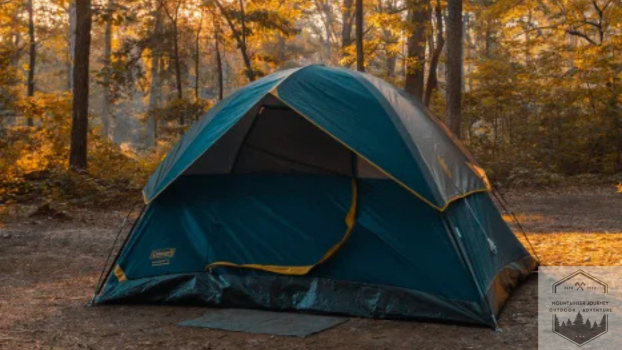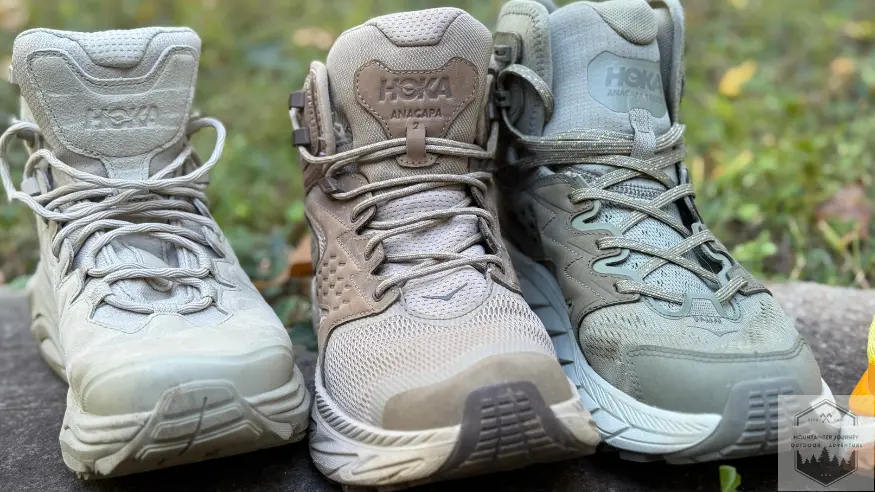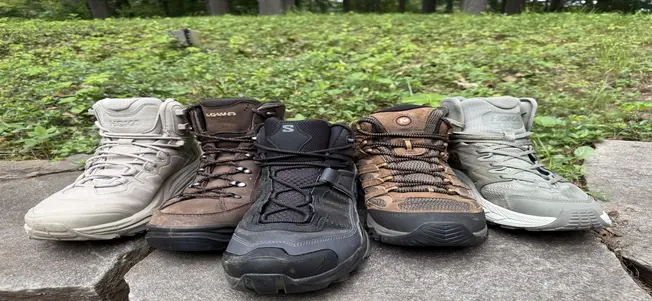How to Choose Hiking Boots | Get The Right Pair

In this guide we are going to teach you how to choose hiking boots. I have over 15 years of experience hiking every weekend and my number one tip is to choose the right hiking boots before going out.
When it comes to outdoor activities, having the right hiking boots. The appropriate shoes or boots can protect your feet from potential injuries while ensuring optimal comfort and support. However, with the wide range of options available on the market, choosing the perfect pair of hiking boots can be overwhelming.
5 Tips In Short
Before reading the full article, these are our 5 tips on how to choose hiking boots for those who don’t want to read the full article.
The first tip is to consider the type of activity you will be engaging in. The second tip is to prioritize fit and comfort. Next, you will want to take in account the terrain you will be exploring. When choosing hiking boots, the last two tips are to consider the durability of the boot as well as the budget or what you are looking to spend.
Know Your Activity
When it comes to choosing the right hiking boots, it is crucial to consider the specific activity you will be engaging in. Are you planning a challenging hiking trip through rugged terrains, or is it a leisurely walk in the park? Different activities require different types of footwear to ensure adequate comfort, protection, and support.
For example, if you are a seasoned hiker, investing in a sturdy pair of hiking boots with excellent ankle support and robust traction is essential. On the other hand, if you are simply going for a casual stroll or light jog, a pair of comfortable athletic shoes might be more appropriate. Understanding the demands of your chosen activity will help narrow down the specific features and characteristics you should seek in your outdoor footwear.
Additionally, knowing your activity will also ensure that you choose the right level of durability and waterproofing. Different outdoor activities can expose your feet to various elements such as mud, water, rocks, or extreme weather conditions. For instance, if you are planning on hiking in wet and muddy terrains, waterproof boots with a high level of durability are essential to keep your feet dry and protected. However, if you are engaging in a more low-impact activity, such as a casual picnic or nature walk, durability and weatherproofing may not be as crucial.
y understanding the terrain and potential challenges associated with your chosen activity, you can make a well-informed decision on the type of hiking boots that will best suit your needs.
Consider the Terrain and Weather Conditions
When it comes to choosing hiking boots, one of the most important factors to consider is the terrain and weather conditions you will be encountering. Different terrains require different types of footwear to ensure maximum comfort and protection. For example, if you will be hiking on rugged, rocky terrains, it is essential to opt for sturdy hiking boots with excellent ankle support and a strong, durable sole.
Additionally, it is crucial to take into account the weather conditions you will be exposed to. In wet and rainy weather, waterproof footwear with Gore-Tex or similar technology can protect your feet from getting soaked and prevent discomfort or blisters. In contrast, during hot and dry conditions, breathable footwear made from materials like mesh or quick-drying synthetic fabrics will help your feet stay cool and dry, preventing excessive sweating and potential foot odors.
From personal experience I have a separate pair of hiking boots for different terrains. For tough terrain I stick to my Hoka Kaha 2’s vs a quick 3 mile hike at the local trail near me I’ll use my Salomon X Ultra 4’s to get me through quickly.
Comfort and Support
When it comes to choosing hiking boots, one of the most important factors to consider is comfort and support. Whether you’re planning a hiking adventure, going for a long walk, or simply exploring a new city, your feet need to be well taken care of.
Comfortable footwear will not only enhance your overall experience but also prevent blisters, foot fatigue, and other discomforts that can ruin your day. Look for shoes or boots with ample cushioning and padding, especially in the midsole and heel areas. This will help absorb shock and minimize the impact on your feet and joints during long walks or hikes on uneven terrain.

In addition to comfort, it’s crucial to prioritize support. Outdoor activities often involve rough and uneven surfaces, making it vital to have shoes that offer stability and protect your feet from twisting or rolling. Look for shoes with sturdy materials and a well-designed sole that can provide excellent traction and grip, reducing the risk of slips and falls. A good rule of thumb is to choose footwear with a supportive arch and a firm heel counter for added stability and proper foot alignment.

Keep in mind that everyone’s feet are unique, and what works for others may not necessarily work for you. Therefore, taking the time to try on different styles and brands is essential in finding the perfect pair.
I recommend to go shopping for outdoor footwear later in the day when your feet are slightly swollen, as this will give you a more accurate fit. I have been using that recommendation for the last 5 years when purchasing hiking boots and it really helps my overall satisfaction with my purchase.
Remember, investing in high-quality, comfortable, and supportive outdoor footwear will not only ensure your feet remain happy and healthy, but it will also enhance your overall outdoor experience, allowing you to fully enjoy your adventures without any unnecessary discomfort or pain.
Look for durability and quality materials
When I choose my hiking boots I want them to be durable and last long. Whether you’re embarking on a hiking adventure, going for a long walk, or simply enjoying the great outdoors, your footwear needs to be able to withstand various weather conditions, rugged terrains, and constant use. Investing in shoes or boots made from high-quality materials such as leather or synthetic fabrics will ensure that they last longer and provide adequate support and protection. These materials are known for their durability and ability to withstand wear and tear.
Additionally, opting for footwear with quality materials also means considering the season and environment in which you will be using them. For example, if you plan on hiking or walking in wet or rainy conditions, it’s essential to choose footwear that is waterproof or water-resistant. Look for shoes or boots that feature a waterproof membrane or treated fabrics to keep your feet dry and comfortable.
Another aspect of quality materials to consider is breathability. When engaging in outdoor activities, it’s natural for our feet to sweat, and without proper ventilation, this can lead to discomfort and unpleasant odors. Selecting footwear made from breathable materials such as mesh or perforated fabrics will allow air to circulate and prevent excessive sweating, keeping your feet fresh and dry throughout your adventures.
Consider your budget
When choosing the right hiking boots, price is a important factor. Budget boots can cost $80-100, while more expensive ones can range over $250 consider how much you are willing to spend before moving forward.
While it’s tempting to splurge on high-end boots or shoes, it’s essential to find a balance between quality and affordability. Set a budget range that you are comfortable with and stick to it. This will help you narrow down your options and prevent you from overspending. Keep in mind that a higher price tag does not always guarantee better performance or durability. Therefore, do your research and read reviews to find footwear that offers good value for your money.
Considering your budget is crucial because hiking boots can vary greatly in price. You don’t want to break the bank on a pair of boots that you may only use occasionally. On the other hand, going for the cheapest option may result in a lack of comfort or poor quality that could leave you unsatisfied and needing to replace them sooner than expected.
Furthermore, it’s important to note that cost should not be the sole determining factor in your decision-making process. While it’s essential to find footwear that fits within your budget, it is equally important to prioritize other factors such as fit, functionality, and durability. Don’t compromise these aspects solely to save a few dollars. Instead, look for footwear that strikes the right balance between price and quality.
By considering your budget when choosing outdoor footwear, you can ensure that you make a wise investment while still getting a product that meets your needs and preferences. Remember to compare prices, read customer reviews, and take advantage of sales or discounts to get the best value for your money.
Always keep these 5 tips in mind when choosing hiking boots. In the end, always trust your gut and PLEASE try them on for a while before purchasing!
Adventure Awaits,
Tyler






